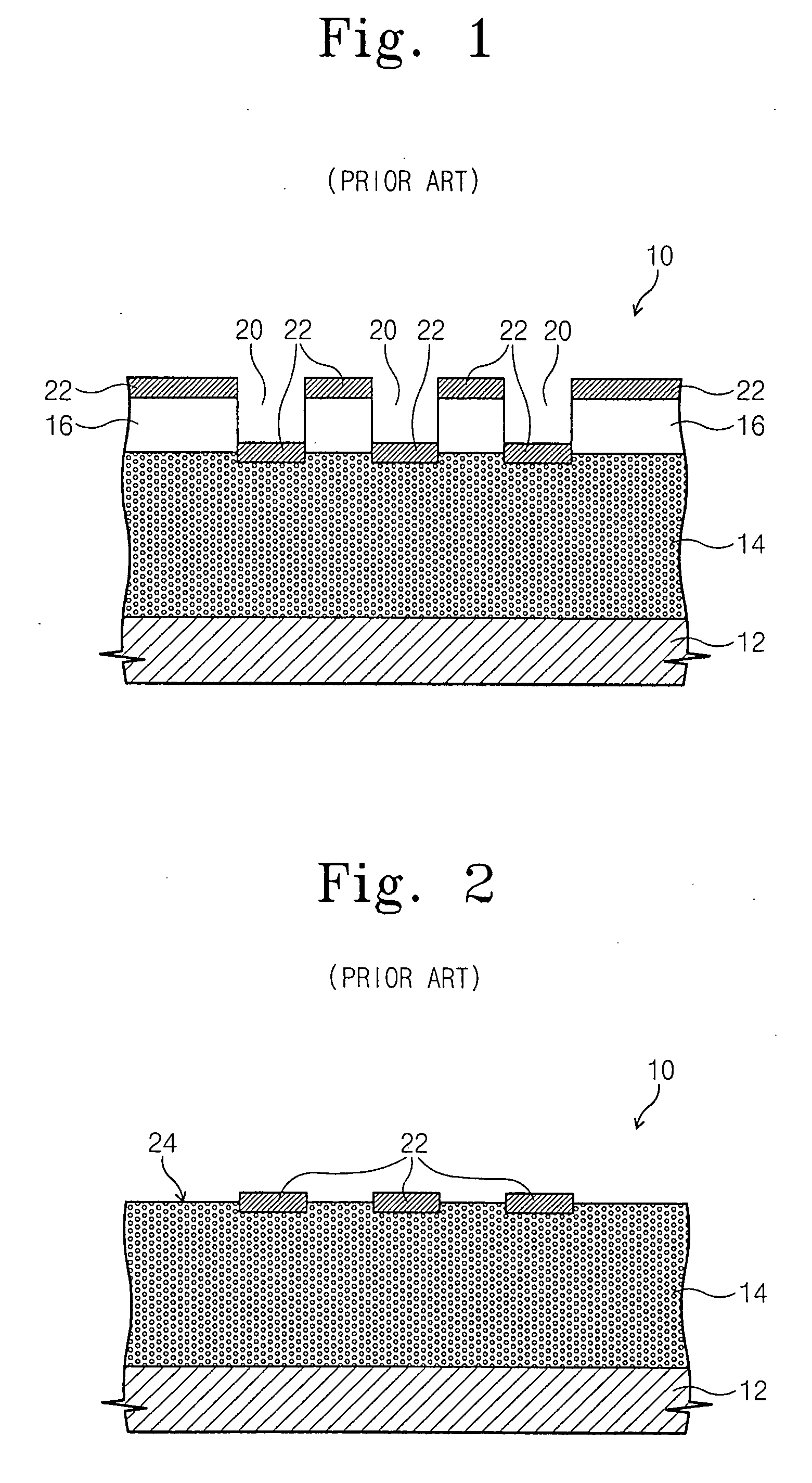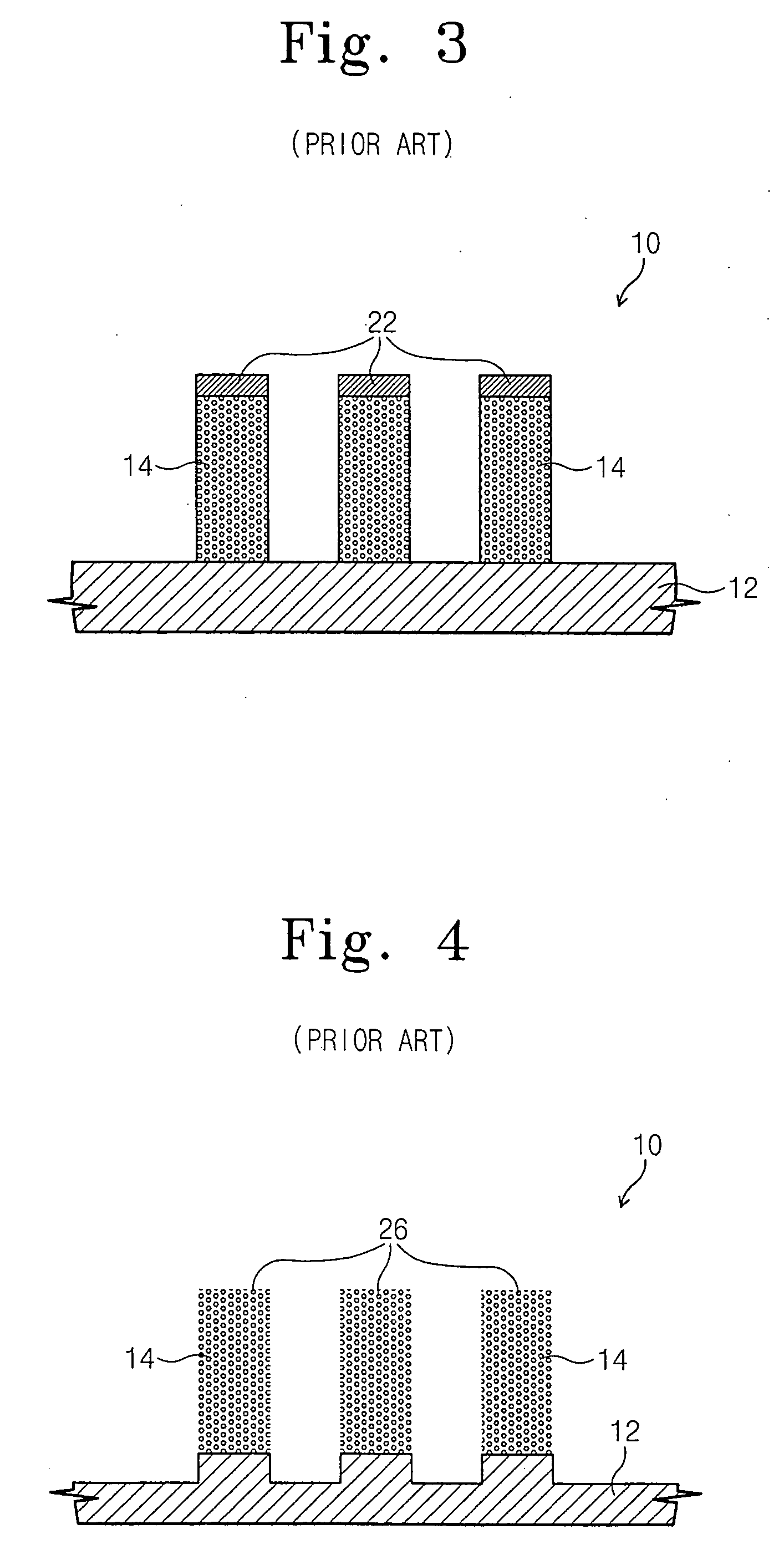Method of forming pattern for semiconductor device
- Summary
- Abstract
- Description
- Claims
- Application Information
AI Technical Summary
Problems solved by technology
Method used
Image
Examples
Example
[0022] Exemplary embodiments of the invention are described below with reference to the corresponding drawings. These embodiments are presented as teaching examples. The actual scope of the invention is defined by the claims that follow. In the description it will be understood that where a layer is described as being “on” or “onto” another layer, the layers may be directly in contact with each other, or intervening layers may also be present.
[0023] Referring to FIG. 5, a lower layer 52 is formed on a substrate 50. A lower photoresist layer 54 is formed on lower layer 52 and an upper photoresist layer 56 is formed on lower photoresist layer 54. Lower photoresist layer 54 typically comprises an anti-reflecting coating (ARC) film and may act as an etch-stop layer for upper photoresist layer 56. Lower photoresist layer 54 is typically formed to a thickness of at least 1 μm and submitted to a baking process performed at a temperature of 200° C. for 90 seconds. Upper photoresist layer 5...
PUM
 Login to view more
Login to view more Abstract
Description
Claims
Application Information
 Login to view more
Login to view more - R&D Engineer
- R&D Manager
- IP Professional
- Industry Leading Data Capabilities
- Powerful AI technology
- Patent DNA Extraction
Browse by: Latest US Patents, China's latest patents, Technical Efficacy Thesaurus, Application Domain, Technology Topic.
© 2024 PatSnap. All rights reserved.Legal|Privacy policy|Modern Slavery Act Transparency Statement|Sitemap



